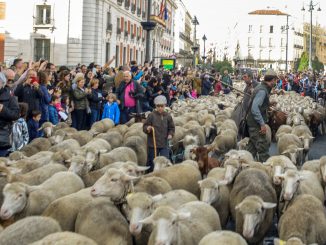
Alison Brogan and Oliver Moore
After 48 hours of intense debate in Luxembourg, the Council of Minsters agreed its position on the post-2020 CAP reform package in the early hours of Wednesday morning. This means that once the Parliament reaches its final position Friday, trilogue discussions on the CAP reform can proceed.
Eco-Schemes…but mostly Scheming
What stands out is ring-fencing 20% of Pillar 1 funding for eco-schemes. This is less than the 30% proposed by the European Parliament. There is, unsurprisingly, a loophole: because some Member States fear that ring-fencing eco-schemes will result in them losing unspent money, the Council agreed that during the first two years (2023 and 2024), funds that are not allocated through eco-schemes may be redistributed via other channels.
While these are named as “specific environmental and climate-related objectives” the trajectory of eco-schemes make it clear that the eco interpretation of any objectives will be weak. Already, the Council under the German Presidency has weakened eco-schemes in September, and again this week in Plenary; the Commission has also proposed that precision farming can be an option in eco-schemes, despite their ineligibility as per Art 28 point 6 of the Commission’s own proposal. In any case, member states would be free to design their own instruments, based on their own self-described circumstances.
Read the Council’s Position in Full
and Annexes
Spending
Politico reports that another compromise is emerging whereby from 2024 to 2027, it may be possible for Member States who spend more than 30% of their Pillar 2 funds on green projects to argue that this should count as part of their 20% allocation for eco-schemes in Pillar 1.
There were no changes to previously announced plans re capping and degressively, but an indication that coupled payments may be acceptable for protein crops emerged: “coupled income support may be an important incentive to improve the competitiveness, sustainability and quality of this sector” and to increase the production of of protein crops and legumes” the compromise text states.
For conditionality, as with the Parliament yesterday, there is pressure on GAEC 8 and 9, with a 10ha threshold being prosed, “without additional restrictions for arable land in GAEC 9 when certain productive uses (catch crops or nitrogen fixing crops, cultivated without plant protection products) are included” Agrafacts reports.
There is no increase in environmental expenditure under the Rural Development fund of the CAP, with ANCs (Areas of Natural Constraints) payments being considered green by default. This de facto reduces the available money for agroecological transition.
Its all about….Timing
Tthere is remarkable overlap and synergy in the content and timing of this two pronged assault on the Commission’s CAP proposal.
There is much said in these times of tough negotiations and compromise. Certainly the unannounced speeding up of voting in the parliament – without translations of final voting texts being ready, with little time for scrutiny, along with the extreme late night haranguing in the Council – is not conducive to clear headed, democratic decision-making.
In reality however, the two main institutions have in large part very similar positions on the substantive issues, with nothing of significance to actually integrate the Green Deal into the coming CAP – a CAP which will lock the EU into business-as-usual until 2027.
The Council and Farm to Fork Strategy
Earlier this week the Council adopted a set of conclusions on the Farm to Fork Strategy. Though this includes an endorsement of the goal of developing a European sustainable food system, one glaring omission and some questionable demands are cause for concern and may have repercussions down the road.
What about CAP?
The Council’s failure to call for the integration of the F2F Strategy, one of the key initiatives of the European Green Deal, into the proposal for the forthcoming CAP is a missed opportunity to legislate for key targets and compensate farmers for achieving them. As has been well-documented by Celia Nyssens of the EEB, the current CAP proposal is ill-equipped to implement the environmental ambitions of the Green Deal in the agriculture sector and could in fact jeopordise them.
Although the Council recognises that consistency and coherence between EU measures is necessary, it does not recognise that the CAP reform should facilitate the climate action and environmental protection envisaged in the Green Deal in a legally binding manner.
What’s more, amid the Council’s positive language regarding the F2F Strategy are demands which undermine the Commission’s position and may hinder the fulfilment of environmental objectives.
What about Organic Farming?
While the Council ‘Welcomes the EU objective for EU’s agricultural land under organic farming’ and ‘recognises that organic farming can make an important contribution to sustainable food systems’ it ‘Calls on the Commission to also assess other possible farming models that may deliver similar environmental benefits’ [33]. ‘Calls on’ is the strongest direction used by the Council in their Conclusions and puts the decision-making process under more pressure to take the prescribed action.
The document does not include suggestions of ‘possible farming models’ that have ‘similar environmental benefits’ to organic farming, but this equivalence between organic and unstated others is clearly an attack on the 25% target for organic production in the EU by 2030.
Impact Assessments – a delay mechanism
The Council also ‘calls on’ the Commission to ‘base legislative proposals’ regarding pesticides, antimicrobials and fertilisers and the other targets set out in the F2F Strategy ‘on scientifically-sound ex-ante impact assessments describing the methods of calculation of the targets and the baselines and reference periods of each individual target, after consultation with the Member States’ [17]. The choice of ‘call on’ as the direction to the Commission regarding impact statements in relation to legislative proposals for the targets in the F2F Strategy is significant. This demand looks like an attempt to further stymie the transition towards sustainable food systems when the need for legally binding targets has long been urgent.
Despite potentially positive elements in the Council’s Conclusions including it’s ‘call on’ the Commission to present a better protein transition strategy, the lukewarm support for key targets in relation to organic farming and reduced inputs, as well as the failure to call for the alignment of the CAP with the F2F Strategy cannot be overlooked. The Council’s surface level welcome for the F2F strategy likely clouds a more hesitant stance.
Conclusion
Incredibly, there is more to come. The Council, Parliament and Commission must yet meet, and trash out an arrangement for CAP to 2027 in trilogue. Do not expect this to be a time for improvement – quite the opposite if history is a guide. The only significant hope is for the Commission to withdraw its proposal, or suggest amendments, or work at the CAP Strategic Plans stage to encourage member states to improve what they initially submit.
Parliament Plenary – Here’s the Amendments to Vote for and Against
Billions for CAP as an “extinction machine” – Farm to Fork Derailed
Parliament – Big Three Political Groups Try to Scupper CAP Eco-Schemes
Commission Proposes Four Flagship Eco-schemes – ARC2020 analysis






1 Trackback / Pingback
Comments are closed.